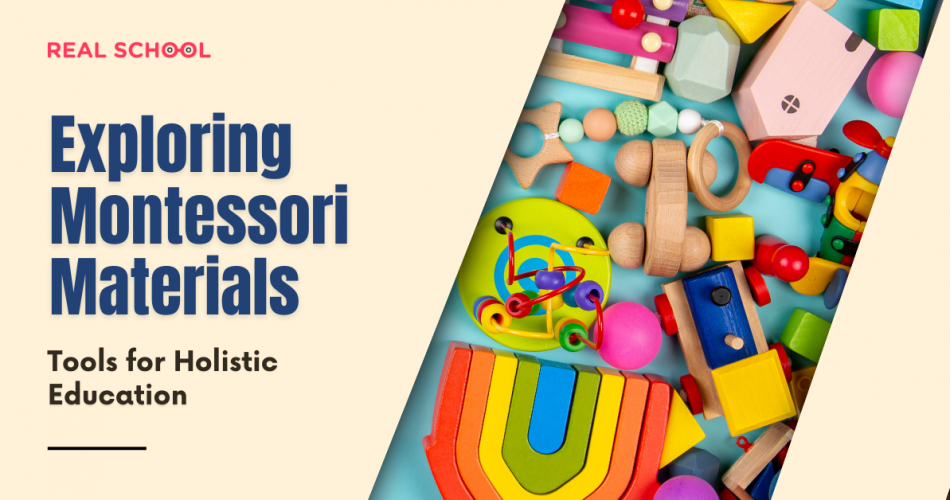Introduction
Montessori education is renowned for its use of specially designed learning materials that promote hands-on exploration and independent learning. These Montessori materials play a pivotal role in the educational philosophy and approach developed by Dr. Maria Montessori. In this article, we will explore some of the key Montessori materials used in classrooms, highlighting their significance in fostering holistic education and supporting a child’s overall development.
-
The Sensorial Materials
Sensorial materials are central to the Montessori curriculum. They are designed to help children refine their senses and develop cognitive skills through direct experiences. Examples of sensorial materials include the Pink Tower, the Brown Stair, and the Knobbed Cylinders. These materials invite children to explore concepts like size, dimension, color, and shape, laying a strong foundation for mathematical and scientific thinking.
-
The Language Materials
Montessori language materials are carefully designed to support language development from phonetic awareness to reading and writing. The Sandpaper Letters, Movable Alphabet, and Metal Insets are some of the iconic language materials. They encourage children to explore letter sounds, form words, and express themselves through writing, nurturing both spoken and written language skills.
-
The Mathematics Materials
Montessori mathematics materials present abstract mathematical concepts in a concrete and accessible manner. The Golden Beads, Number Rods, and Spindle Boxes are examples of these materials. Children use them to understand concepts like quantity, numerals, addition, subtraction, multiplication, and division. The hands-on experience with these materials helps build a solid mathematical foundation.
-
The Practical Life Materials
Practical life materials hold a special place in the Montessori classroom. They include activities related to daily life, such as pouring water, polishing objects, and buttoning clothes. These materials promote independence, fine motor skills, and practical problem-solving. Children gain a sense of accomplishment and self-confidence as they master these essential life skills.
-
The Cultural Materials
Cultural materials in Montessori education introduce children to various aspects of the world around them. The Geography Puzzle Map, the Continent Globe, and the Botany Cabinet are among the cultural materials. They spark curiosity about different cultures, continents, plants, and animals, fostering a sense of appreciation and respect for the diversity of the world.
-
The Art and Music Materials
Montessori education also integrates art and music into the curriculum. Materials like the Color Tablets and the Bells Set allow children to explore the world of colors and sounds. These materials encourage self-expression, creativity, and an appreciation for artistic and musical aesthetics.
-
The Geography Materials
Geography materials introduce children to the continents, countries, and landmarks of the world. The Sandpaper Globe and the Puzzle Maps are excellent examples of geography materials. Through hands-on exploration, children develop a global perspective and an understanding of the world’s geographical diversity.
-
The Botany and Zoology Materials
The Montessori classroom includes materials that pique children’s interest in the plant and animal kingdoms. The Leaf Cabinet and the Animal Puzzles are some of the botany and zoology materials. These materials nurture a sense of wonder about nature and encourage children to explore the living world around them.
-
The Peace Education Materials
Montessori education also emphasizes the importance of peace education. The Peace Table and the Peace Rose are examples of materials used to teach conflict resolution, empathy, and communication skills. These materials foster a culture of kindness and cooperation within the classroom community.
-
The Practical Application of Montessori Materials
In the Montessori classroom, teachers carefully introduce materials to students based on their developmental readiness. Children are encouraged to work with the materials independently and at their own pace. Through this hands-on exploration, children gain a deep understanding of concepts and develop a love for learning.
Conclusion
Montessori materials are instrumental in creating a dynamic and enriching learning environment. These carefully designed tools support the child’s holistic development, nurturing their cognitive, language, mathematical, sensorial, and practical life skills. By encouraging exploration and independent learning, Montessori materials play a vital role in fostering a love for knowledge, curiosity, and a lifelong passion for learning.
FAQs (Frequently Asked Questions)
How do Montessori materials differ from traditional educational materials?
Can Montessori materials be used at home to supplement a child’s education?
What age groups are Montessori materials suitable for?
How do Montessori materials support hands-on learning?
Are Montessori materials available for purchase by parents and educators?







